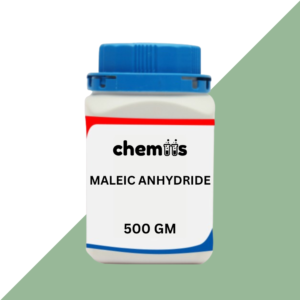Sodium Azide (NaN₃) is a white crystalline powder primarily known for its role as a preservative, chemical reagent, and propellant component. Its high toxicity and rapid decomposition into nitrogen gas make it useful in specific industrial and scientific applications, particularly where controlled gas evolution is required.
Applications
1. Automotive Industry
- Airbag Systems: Used as a gas generator in airbags; sodium azide decomposes rapidly upon ignition, producing nitrogen gas to inflate the airbag instantly.
2. Laboratory and Research
- Biochemical Reagent: Acts as an inhibitor of mitochondrial respiration in biological studies by affecting cytochrome oxidase activity.
- Preservative in Laboratory Solutions: Commonly used in small concentrations to prevent microbial contamination in reagents and buffers.
3. Explosives and Propellants
- Gas Generating Agent: Decomposes to produce nitrogen gas in explosives, propellants, and pyrotechnic devices.
4. Chemical Synthesis
- Intermediate: Used in the synthesis of other azides and various organic compounds, including pharmaceutical agents and agricultural chemicals.
Safety and Handling
Hazards:
- Toxicity: Highly toxic and harmful if ingested, inhaled, or absorbed through the skin.
- Reactivity: Reacts violently with acids to produce toxic hydrazoic acid gas.
- Environmental Risk: Hazardous to aquatic life with long-lasting effects.
Precautions:
- Personal Protective Equipment (PPE):
- Wear gloves, safety goggles, and a lab coat during handling.
- Use a respirator in situations where dust or vapors may be generated.
- Handling Guidelines:
- Handle in a well-ventilated area or under a fume hood.
- Avoid exposure to heat, shock, or friction to prevent unintended decomposition.
- Storage:
- Store in a tightly sealed container in a cool, dry, and well-ventilated place.
- Keep away from acids, moisture, and incompatible substances.
First Aid Measures:
- Inhalation: Move to fresh air immediately. Seek medical attention for any respiratory discomfort.
- Skin Contact: Wash thoroughly with soap and water. Seek medical advice if irritation occurs.
- Eye Contact: Rinse eyes with plenty of water for at least 15 minutes. Consult a healthcare professional.
- Ingestion: Do not induce vomiting. Rinse mouth with water and seek immediate medical attention.
Disposal:
- Dispose of Sodium Azide according to local, regional, or national environmental regulations. Avoid releasing it into drains or waterways due to its toxicity.








Ananya Joshi (verified owner) –
Very well worth the money.
Meenal Shah (verified owner) –
Hassle-free experience.
Lavanya Jain (verified owner) –
Trustworthy seller.
Atul Chauhan (verified owner) –
Clear product details.
Reema Das (verified owner) –
Product quality is top-notch.
Suraj Barman (verified owner) –
Great customer support.
Ishita Paul (verified owner) –
Easy to find what I wanted.
Yash Chatterjee (verified owner) –
Good service.
Yash Chatterjee (verified owner) –
Exactly as shown.
Harsh Vardhan (verified owner) –
Excellent chemical quality.